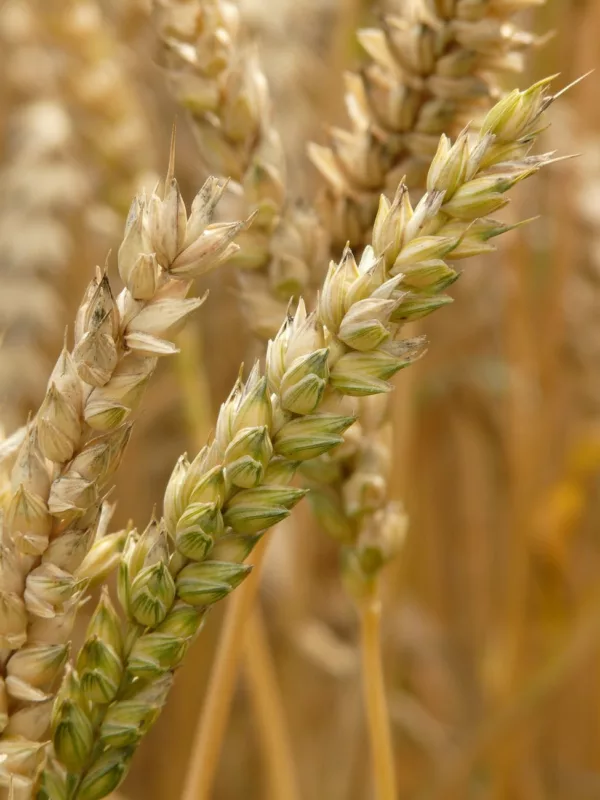Crafting the perfect beer is an art that involves a symphony of ingredients, each playing a unique role in shaping the final product. Among these crucial components, malts stand as the foundation upon which the exquisite flavours, aromas, and colours of beer are built. In this comprehensive guide, we delve deep into the world of malts, understanding their significance, unravelling their diverse flavours, and exploring the top 20 malts that grace the landscape of craft beer.
The Essence of Malts: What Are They?
At its core, malt is a germinated cereal grain, most commonly barley, that has undergone a carefully controlled malting process. This process awakens the dormant enzymes within the grain, transforming starches into fermentable sugars. These sugars are essential for the yeast to work its magic during the fermentation process, producing alcohol and carbonation. Beyond sugar production, malts impart the colour, body, and flavours that define the character of the beer.
Why Malts Matter: The Importance of Malts in Brewing
Malts serve as the canvas upon which brewers paint their masterpieces. They contribute not only sugars for fermentation but also a myriad of flavours, colours, and textures that define each beer style. The choice of malts can elevate a beer from mundane to extraordinary, turning a simple brew into a complex symphony of taste. In a world where creativity knows no bounds, malts provide the foundation upon which brewers can experiment and create.
Unravelling Flavor Diversity: How Different Malts Create Distinctive Tastes
The magic of malts lies in their ability to produce a wide spectrum of flavours, from rich caramel and toasty notes to chocolatey depths and subtle hints of spice. This diversity stems from factors such as the type of grain, the degree of malting, and the roasting process. The interaction between time, temperature, and moisture during malting plays a pivotal role in shaping the chemical compounds that result in these nuanced flavours.
Base Malts vs. Specialty Malts: A Flavorful Balance
Base malts form the backbone of a beer, providing the majority of fermentable sugars. These malts typically have a mild flavour profile, allowing other ingredients to shine. They are kilned at lower temperatures to preserve their enzymatic activity. Speciality malts, however, undergo specific kilning processes to develop their unique characteristics. Roasting at higher temperatures caramelizes sugars and produces a range of colours and flavours that differentiate each malt.
The Symphony of Flavors: An In-Depth Overview of the Top 20 Malts in Craft Beer
Maris Otter
Known for its biscuity richness, Maris Otter is a favourite among brewers looking to evoke traditional British ales. Its heritage traces back to the mid-20th century when it was first developed in England. The distinctive nutty and bready flavour of Maris Otter makes it a sought-after choice for pale ales, bitters, and milds, adding a layer of complexity to these styles.
2-Row Pale Malt
As the name suggests, this malt is composed of rows of barley kernels, contributing a mild, neutral flavour profile that allows other ingredients to shine. Widely used in American craft brewing, 2-Row Pale Malt is the foundation of many beer styles, from pale ales to IPAs. Its subtle sweetness and clean taste make it a versatile canvas for various hop and yeast combinations.
Pilsner Malt
The backbone of classic pilsners, this malt is prized for its pale colour and clean, crisp flavour. Originating from the Czech town of Plzeň, Pilsner Malt lends itself well to light lagers, highlighting the delicate balance between malt sweetness and hop bitterness that defines the style.
Vienna Malt
With its origins in Vienna, this malt adds a touch of toasty richness to beer. It’s a key ingredient in Vienna lagers and Märzen, imparting a warm, nutty flavour profile that complements the malt-forward nature of these styles. Vienna Malt also finds its way into other beer varieties, contributing depth and complexity.
Munich Malt
Originating in the heart of Bavaria, Munich Malt is synonymous with traditional German lagers. This malt delivers a malty sweetness and depth that’s essential for bocks, doppelbocks, and dark lagers. The rich melanoidin compounds formed during kilning create a caramelized, bread crust-like flavour that characterizes these styles.
Crystal/Caramel Malt
These malts come in a range of colour and sweetness levels, imparting caramel, toffee, and dark fruit notes to beers. They add body, colour, and residual sweetness, enhancing the overall complexity of various styles. Lighter Crystal malts contribute subtle sweetness and colour, while darker versions intensify the flavour profile.
Chocolate Malt
Often associated with stouts and porters, Chocolate Malt brings deep, roasted chocolate and coffee flavours to dark beers. The roasting process creates compounds that lend a bittersweet quality, reminiscent of dark chocolate. When used in moderation, it can provide complexity and balance to a beer’s malt profile.
Black Patent Malt
If darkness were a flavour, it would be found in Black Patent Malt. This malt is responsible for the profound colour and roasted bitterness of stouts, porters, and other dark ales. Its intense kilning process gives rise to deeply charred and astringent flavours, making it a key player in achieving the classic characteristics of these styles.
Roasted Barley
Like a finely brewed cup of coffee, Roasted Barley contributes a distinct dry bitterness to stouts and Irish ales. This malt doesn’t impart the sweetness found in Chocolate Malt; instead, it offers a roasted, almost astringent quality that lends complexity and depth to these styles.
Wheat Malt
While barley is the most common grain used in brewing, wheat malt adds a unique touch to beer styles. Known for its light colour and creamy mouthfeel, Wheat Malt is a staple in wheat beers like Hefeweizens, Belgian Witbiers, and American Wheat Ales. Its slightly tangy character and haze-producing proteins create the signature cloudiness in these styles.
Rye Malt
Rye is notorious for its stubborn nature during the brewing process, but the effort is well worth it. Rye Malt adds a distinct spiciness and complexity to the beer, making it a favourite for rye IPAs and other rye-forward styles. The peppery notes from rye complement hops and yeast characteristics, creating a harmonious blend of flavours.
Oats
When oats find their way into the malt bill, they contribute more than just nutrients; they bring a velvety mouthfeel to the beer. Oats are often used to enhance body and texture, making them ideal for styles like oatmeal stouts and New England IPAs. The smooth, silky quality they lend to the beer enhances the overall drinking experience.
Special B Malt
Hailing from Belgium, Special B Malt is a standout in the realm of speciality malts. It imparts deep, dark fruit flavours like raisin, fig, and plum, enriching Belgian-style ales and other dark brews. The complex sugars formed during the kilning process are responsible for its unique fruity and caramel notes.
Aromatic Malt
If malt had a perfume, it would be Aromatic Malt. This malt is renowned for its ability to enhance maltiness and aroma, making it an excellent choice for Belgian and English ales. It adds a layer of depth that elevates the sensory experience of the beer, highlighting the malt character without overpowering it.
Melanoidin Malt
Melanoidin Malt is a master of subtlety. It doesn’t just contribute colour; it enhances body, mouthfeel, and malt complexity in a wide range of styles, including lagers and ales. The Maillard reaction during malting forms melanoidin’s, which lends a biscuity, bready quality to the beer while improving its stability.
Carapils/Dextrin Malt
When it comes to head retention and mouthfeel, Carapils/Dextrin Malt takes centre stage. This malt doesn’t contribute many colors, but it adds a touch of sweetness and body, creating a creamy texture that enhances the overall drinking experience. It’s a favourite among brewers aiming to achieve that luscious foam atop their beers.
Victory Malt
Victory Malt is aptly named, as it brings triumph to various beer styles. With its toasty, nutty flavours, this malt is a favourite for adding depth and complexity. Its versatility allows it to shine in a range of styles, from brown ales and porters to Belgian Dubbels.
Honey Malt
The nectar of bees finds its way into the world of brewing through Honey Malt. This speciality malt offers a subtle honey-like sweetness and delicate floral notes, making it a sought-after ingredient for adding dimension to a variety of beer styles. It pairs well with other malts and can contribute to both colour and flavour.
Biscuit Malt
Imagine the comforting aroma of freshly baked biscuits filling the air—that’s the essence of Biscuit Malt. This malt delivers toasty, biscuit-like flavours that evoke warmth and nostalgia. It’s a fantastic addition to ales that require a touch of baked goodness, adding complexity to styles like brown ales and ESBs.
Acidulated Malt
Not all malts are used solely for flavour and colour; some, like Acidulated Malt, are employed for functional reasons. This malt contains lactic acid, which helps in pH adjustment during the brewing process. Additionally, it imparts a subtle tartness that can be harnessed to achieve the perfect balance in sour and Berliner Weisse-style beers.
Malts in detail…
Conclusion: Crafting Complexity Through Malts
As we journey through the diverse world of malts, it becomes evident that these humble grains are more than just ingredients; they are the heart and soul of beer. With each malt contributing its own unique flavour, colour, and character, brewers can craft an astonishing array of beers that cater to every palate. From the nutty depths of Victory Malt to the coffee-like bitterness of Roasted Barley, the symphony of flavours created by malts showcases the endless possibilities that exist within the world of craft beer. So, the next time you enjoy your favourite brew, take a moment to appreciate the craftsmanship that begins with the careful selection of malts, leading to the creation of a masterpiece in every glass. Cheers to the artisans who turn these simple grains into liquid poetry!






